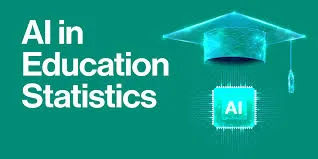
AI in higher education cautioned
Growing Caution Over AI Integration in Higher Education Sparks Global Debate
As artificial intelligence continues to revolutionize various sectors, higher education institutions around the world find themselves at a crossroads torn between embracing the immense potential of AI and exercising caution over its unchecked integration. While universities are rapidly adopting AI powered tools to streamline administration, personalize learning, and support research, an emerging chorus of voices from educators, ethicists, and policy makers is urging restraint. These cautionary perspectives stem from growing concerns about data privacy, academic integrity, unequal access, and the long term implications of delegating key educational functions to machines. As such, the role of AI in higher education is now under intense scrutiny, with stakeholders calling for a more thoughtful, regulated, and human centered approach.
In recent years, AI driven systems have been introduced in universities at an unprecedented rate. From automated grading and chatbot tutors to adaptive learning platforms and predictive analytics for student retention, AI promises to enhance efficiency and tailor the educational experience to individual needs. For example, institutions like Georgia Tech and Arizona State University have pioneered the use of AI teaching assistants and intelligent course design, reporting increased student satisfaction and operational cost reductions. However, as these technologies become embedded in core academic functions, questions have emerged about their transparency, reliability, and unintended consequences. Critics argue that blind trust in AI could undermine the pedagogical values of higher education, which rely heavily on critical thinking, mentorship, and human judgment.
One of the most pressing concerns involves academic integrity. The rise of generative AI tools such as ChatGPT, Claude, and others has made it increasingly difficult for educators to distinguish between original student work and AI assisted content. Plagiarism detection systems are struggling to keep pace, and some faculty members report a noticeable increase in assignments that show signs of algorithmic generation. This blurs the line between learning and outsourcing, raising philosophical and practical concerns about what it means to be educated in the age of AI. Some universities have begun rethinking assessment methods shifting toward oral exams, project based learning, and in class essays but these solutions are labor intensive and not always scalable.
Another area of concern is the potential for algorithmic bias and unequal treatment of students. AI systems are only as objective as the data used to train them, and there is growing evidence that predictive algorithms may inadvertently disadvantage students from marginalized communities. For instance, if historical data reflects systemic inequities such as lower completion rates for underrepresented students AI tools might flag these students as “at risk,” influencing decisions around academic support or admissions. This creates a self reinforcing loop where past injustices are replicated under the guise of technological objectivity. Moreover, the use of facial recognition, sentiment analysis, and proctoring AI during remote exams has sparked widespread criticism, with students complaining about surveillance, false positives, and discriminatory outcomes.
Data privacy is another significant issue in the AI education nexus. AI platforms rely on vast amounts of student data, from browsing habits and learning styles to performance metrics and biometric details. Many institutions partner with third party vendors to provide these tools, raising questions about who controls this data, how it’s stored, and what it might be used for in the future. There have been instances where student data was inadvertently exposed or used for marketing purposes without informed consent. Privacy advocates warn that without robust data governance frameworks, students could be subjected to lifelong profiling, where their educational data shadows them into employment, insurance, or law enforcement systems.
Equity and access are also at the center of the debate. While AI holds the promise of democratizing education through personalized learning and remote access, the benefits are unevenly distributed. Elite institutions with strong funding and infrastructure are better positioned to develop and deploy advanced AI tools, while smaller or underfunded colleges struggle to keep pace. Students in rural areas or developing countries may lack the bandwidth, hardware, or digital literacy required to fully engage with AI enhanced learning environments. If left unaddressed, this digital divide could exacerbate existing educational disparities, creating a tiered system where only a privileged few reap the rewards of technological advancement.
In response to these challenges, educational bodies and governments are beginning to develop guidelines and ethical frameworks for AI use in academia. The UNESCO Recommendation on the Ethics of Artificial Intelligence, adopted in 2021, calls for a human centered, inclusive, and transparent approach to AI in education. Several countries, including the UK, Canada, and Australia, have launched national consultations or working groups to explore the regulatory needs of AI in academic settings. Universities themselves are creating task forces to assess the impact of AI on curricula, pedagogy, and student welfare. Yet, many experts caution that policy development is lagging behind technological adoption, and that more proactive leadership is needed to prevent long term harm.
Meanwhile, a growing number of educators are advocating for “AI literacy” to become a core component of higher education. Rather than banning AI or ignoring its presence, they argue that students should be taught how these systems work, how to use them ethically, and how to critically assess their outputs. Some universities have already begun integrating AI ethics, algorithmic accountability, and machine learning basics into general education courses. This approach aims to empower students as informed participants in the AI driven world, rather than passive consumers of opaque technologies. The hope is that by fostering critical awareness, institutions can strike a balance between innovation and integrity.
In conclusion, while the transformative potential of artificial intelligence in higher education is undeniable, the growing wave of caution reflects a deeper reckoning with the ethical, social, and educational implications of this shift. The integration of AI must not come at the expense of academic rigor, equity, privacy, or the human values that underpin learning itself. As universities chart their course through the AI era, they face a dual challenge harnessing the benefits of emerging technologies while safeguarding the principles that make education a powerful engine for personal and societal growth. This balancing act will define the future of higher education and perhaps even the future of knowledge itself.











